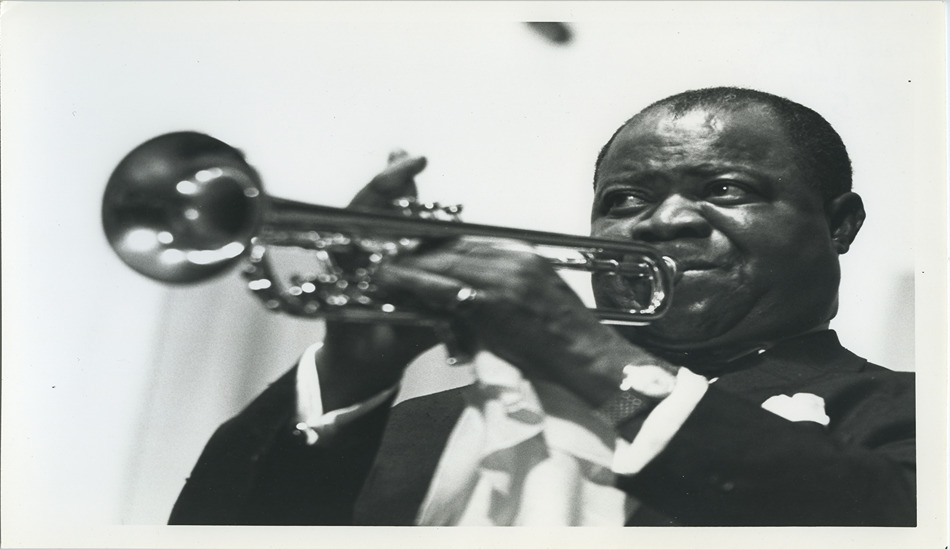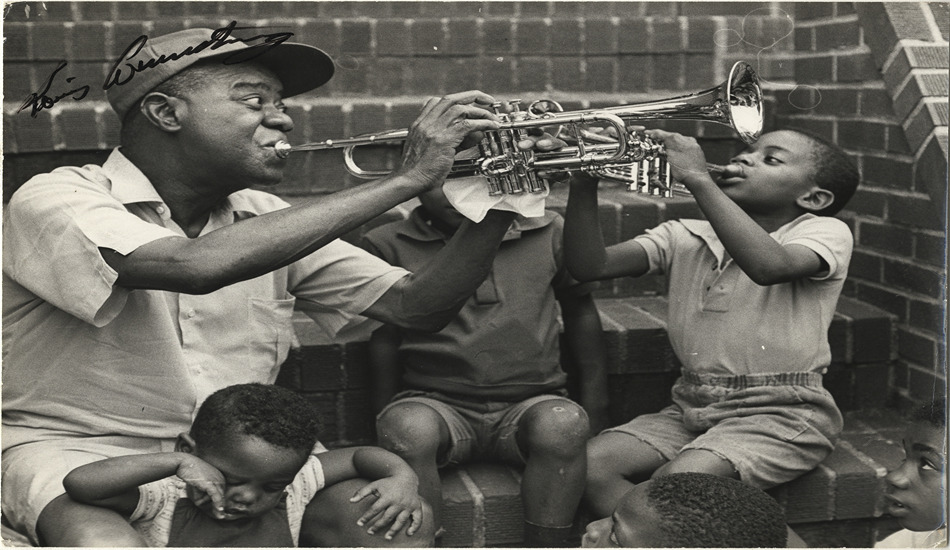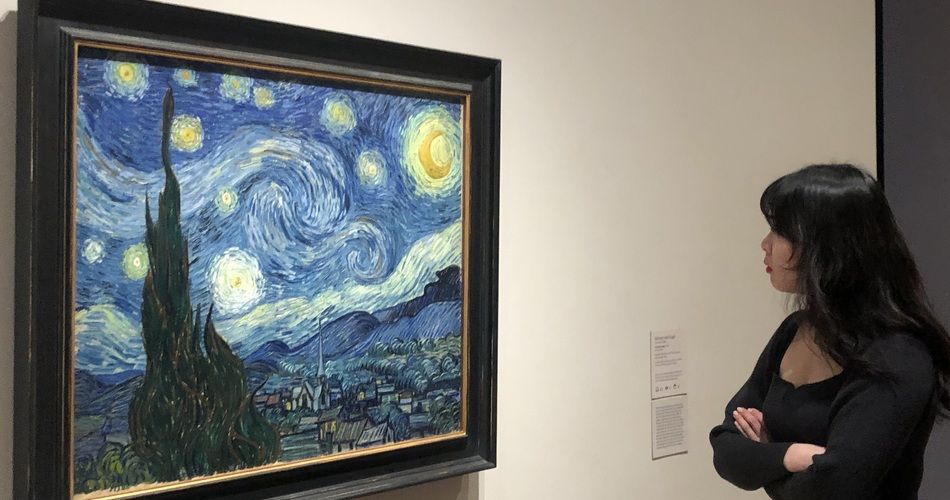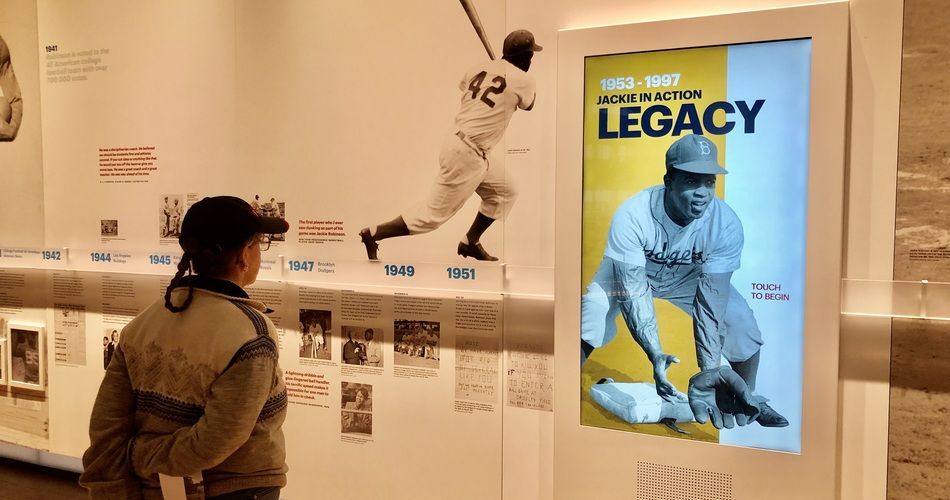A three-day foray in Manhattan and beyond shines the light on music, sports, modern art and military history. New museum developments salute African Americans.
By Randy Mink, Senior Editor
New museum experiences await travelers in New York City. I checked them out on a recent whirlwind, perhaps overly ambitious trip.
My 3-3-3 plan was to track down three new museum developments—each revolving around celebrity, pop culture and entertainment—and three other mind-expanding attractions in three action-packed days.
Two of the museums on my list honor the memory of African American icons of the mid-20th century—baseball great Jackie Robinson and jazz trumpeter/singer Louis Armstrong. They died of heart attacks within a year or so of each other.
The Jackie Robinson Museum, after 14 years of planning, officially opened in September 2022 in Lower Manhattan’s Soho neighborhood. At the July ribbon cutting was Robinson’s widow, Rachel, who has carried the torch for his legacy since he died at age 53 in 1972. She is 100 years old.
Jackie Robinson Museum Salutes a Sports and Civil Rights Hero
Robinson, as most baseball fans know, broke the color barrier in 1947, becoming the first African American to play on a Major League Baseball team in the modern era. Throughout his 10-year career as No. 42 with the Brooklyn Dodgers, he endured racist taunts and death threats on and off the field.

The Jackie Robinson Museum in New York City pays tribute to the baseball great, a Brooklyn Dodgers star for 10 years. (Photo credit: Jackie Robinson Foundation).
In the immersive, multimedia setting of the museum’s spacious, high-ceilinged Main Gallery, artifacts, photos and touchscreen kiosks chronicle Robinson’s life, which is captured in a timeline offering context with national and world events. Story towers in the middle of the exhibit hall focus on his roles as soldier in the U.S. Army, civil rights champion, entrepreneur and family man.
In the “Living Legacy” corner, museum-goers watch color videos of 42 people from various walks of life—including ballplayers, sports writers, politicians and civil rights activists—who tell what Robinson meant to them.
A museum visit starts with the five-minute introductory film “Life is Not a Spectator,” which spotlights Robinson’s early family life and the values that led to his courageous choices as an athlete, activist and humanitarian. After viewing the film, I was intrigued by the neighboring display panels with examples of on-field incidents and hate mail right after Robinson signed with the Dodgers organization.
The Dugout corner features Robinson’s National League Rookie of the Year award from 1947, the first time such an award was ever given, along with black-and-white footage of No. 42 in action. (In 1987, the award was renamed Jackie Robinson Rookie of the Year Award.) Also on display are a bat from his rookie year and the jersey worn on the very first Jackie Robinson Day, September 23, 1947, when he was presented with a Cadillac, TV set, gold watch and other gifts.
Jackie Robinson: Baseball Great and National Celebrity
The Main Gallery leads to the Sports Gallery, which spotlights Robinson’s college days in California—he excelled in basketball, football, and track and field as well as baseball—and his Dodgers career.
Visitors in the Sports Gallery also see highly sought-after Robinson baseball cards, World Series programs (the Dodgers reached the post-season six times during Robinson’s time with the team), his 1962 bronze plaque from the Baseball Hall of Fame in Cooperstown, and an illuminated scale model of Ebbets Field in Brooklyn, home of the Dodgers before they moved to Los Angeles.
Colorful movie posters and magazine covers, plus advertisements, comic books and newspaper articles pertaining to Robinson’s celebrity populate the Pop Culture Icon Gallery.
Some Interesting Facts About Jackie and Rachel Robinson
I learned many interesting things at the Jackie Robinson Museum. Here are just a few:
- After his baseball career, Robinson served as vice president of personnel of Chock Full o’ Nuts, a New York-based coffee and restaurant chain. He left the company in 1966 to join the staff of New York Gov. Nelson Rockefeller.
- Robinson co-founded Freedom National Bank, a Black-owned and -operated bank that arranged business loans and mortgages for residents of Harlem.
- Leveraging his fame to champion civil rights, he collaborated with Dr. Martin Luther King Jr. in civil rights activities in the 1950s and ’60s.
- Robinson served on the board of directors of the National Association for the Advancement of Colored People (NAACP) for 10 years, including a stint as chairman of the NAACP Legal Defense Fund.
- While in the Army, Robinson was court martialed for refusing to sit in the back of a bus. He was acquitted.
- Rachel Robinson earned a master’s degree in psychiatric nursing at New York University and started her career at the Albert Einstein College of Medicine in the Bronx, where she opened one of the country’s first outpatient psychiatric programs. She became a professor at Yale University and in 1973 created the Jackie Robinson Foundation to perpetuate her husband’s memory.

Louis Armstrong, a master at the trumpet, also was known for his singing. (Photo credit: Louis Armstrong House Museum)
Louis Armstrong House Museum in New York Preserves His Memory
The Louis Armstrong House Museum, on a residential street in the humble Corona neighborhood of Queens, is an overlooked gem that dramatically heightens its profile this spring when a modern extension opens across the street.
The Louis Armstrong Center, as the museum’s new education center is called, will offer music classes, programs on contemporary issues, a performance space and an interactive exhibition highlighting the life of Louis Armstrong, one of the first Black music icons. It also will contain the musician’s archives, which are being transferred from Queens College.
Armstrong and his fourth wife, Lucille, purchased the house on 107th Street for $8,000 in 1943 and lived there the rest of their lives. A millionaire who could have lived anywhere, he preferred Corona’s unpretentious surroundings as his refuge between concert tours.
Whenever “Mr. Satchmo” was at home, it was not uncommon for kids to be hanging around the front steps, where he might be seen teaching them to play the trumpet. When he had a stairlift installed following his 1968 heart attack, he would let the kids ride it up and down the stairway. The Armstrongs had no children of their own.

Louis Armstrong enjoyed socializing on the stoop of his modest house in the Corona neighborhood of Queens. (Photo credit: Louis Armstrong House Museum)
Touring the Louis Armstrong House Museum
The modest brick-faced house, built in 1901, was declared a National Historic Landmark in 1977, five years after Armstrong’s death, and looks very much as it did at the time of his passing. With the original furniture, wall art and layout, the rooms are frozen in time. Lucille’s ambitious plans to make the home a “memorial museum” were realized in 2003, 20 years after her death.
The most fascinating room is the wood-paneled den, where, on reel-to-reel tape recorders, Armstrong recorded hundreds of hours of himself telling jokes, practicing the trumpet and talking about home life. Visitors see his carefully boxed reels on the shelves and hear snippets from the recordings as they tour the home. The prettiest room is the retro kitchen with its wood cabinets painted a metallic-looking aqua and appliances to match.
House tours for up to 40 persons, divided into groups of eight, are $10 a person. Tables and chairs can be set up for bagged lunches in the brick-walled garden.
Some Interesting Facts About Louis Armstrong
Armstrong, known for his big mouth, toothy smile and raspy voice, appeared on radio, television, movie screens and concert stages for more than five decades. Touring the home and the Welcome Center’s exhibit room, I picked up these facts about “Pops,” as musicians and close friends called him:
- Born in 1901, Armstrong grew up in poverty in New Orleans, never finishing the fifth grade. He honed his musical skills in a youth detention center.
- Louis Armstrong and His All-Stars was the main performing vehicle. The Louis Armstrong Orchestra, formed during the Big Band Era, was disbanded in 1947.
- Armstrong averaged 300 concerts a year
- “What a Wonderful World” (1967) was the best-selling song of his career.
- His vocal rendition of the title song of the Broadway musical “Hello, Dolly! topped the pop charts in 1964, temporarily replacing the Beatles.
- Armstrong appeared in more than 20 full-length motion pictures, most notably in “High Society” (1957), in which he was the first African American to get feature billing in a Hollywood movie.
Museum of Broadway in New York Spotlights the Best of Broadway
With the November 2022 opening of the Museum of Broadway in Times Square, visitors can immerse themselves in the lore of the world’s most fabled theater scene as told through costumes, props and other artifacts, plus photos, video clips, text and show tunes playing in the background.
Inevitably, folks find themselves humming along while perusing exhibits on their favorite shows, whether it’s “Phantom of the Opera,” “West Side Story” or Disney’s “The Lion King.” Or maybe you’re a fan of “Cats,” “Rent,” “Cabaret,” “A Chorus Line” or “Fiddler on the Roof.”
Exhibits throughout the second and third floors follow a timeline that starts in 1732 and continues into the 19th, 20th and 21st centuries. Among treasures you’ll run across are the iconic red dress worn by the little orphan star of “Annie,” colonial-style costumes from “Hamilton,” a pair of shiny red boots from “Kinky Boots,” Aladdin’s lamp from “Aladdin” and jewelry from “Moulin Rouge the Musical.”
After the timeline galleries, guests get a detailed look at what goes on behind the scenes in “The Making of a Broadway Show,” a room that features text and short video interviews with backstage specialists—stage managers, lighting designers, make-up artists, costumers and others who make it happen.
Attractions Pass Cuts Admission Costs at New York Museums
Besides exploring new museums, I wanted to check out some New York standbys and did it economically by using a 3C CityPASS ticket. Priced at $96 for adults and valid for nine consecutive days, it provides admission to your choice of three top Manhattan attractions (from 11 options) and saves you big bucks over buying individual admission tickets. The CityPASS website clearly spells out the savings that can be realized. Besides saving money, CityPASS ticket holders save time by skipping the regular lines.

Vincent Van Gogh’s The Starry Night, Museum of Modern Art. (Randy Mink Photo)
I hadn’t been to the Museum of Modern Art (MoMA) for more than 30 years, so I made a reservation with my C3 CityPASS ticket and roamed the galleries for two hours. One of the world’s leading repositories of modern and contemporary art, MoMA displays works by the likes of Van Gogh, Gauguin, Monet, Rousseau, Cezanne, Picasso, Matisse, Dali, Kahlo, Lichtenstein, Mondrian and Pollock, plus mind-bending art from the late 20th and 21st centuries. Located in the heart of midtown Manhattan, the museum completed a major expansion in 2019.
A MoMA highlight for me was coming face-to-face with Vincent Van Gogh’s The Starry Night (1889), one of the museum’s great treasures, and catching an insightful, enthusiastically received docent talk in front of the iconic painting. Another crowd-pleaser: Andy Warhol’s famous Campbell’s Soup Cans, a set of 32 canvasses, one for each soup flavor sold by Campbell’s at the time (1962).
Being a military history buff, I spent hours at the Intrepid Sea, Air & Space Museum, another participating attraction in the C3 CityPASS program. Situated at Pier 86 on the Hudson riverfront, it occupies the retired Intrepid aircraft carrier, which served in World War II and Vietnam and was one of NASA’s recovery vessels for the space program.
The Intrepid’s hangar deck houses multimedia presentations, interactive exhibits and flight simulators, while the flight deck displays historic aircraft like the A-12 Blackbird supersonic jet. In the Space Shuttle Pavilion, visitors can see the retired space shuttle Enterprise. Also on site: the Cold War-era guided missile submarine Growler and supersonic British Airways Concorde.
Pass Holders Save Money at New York Observation Decks
On my next stop, I gazed down on the Intrepid and the rest of Manhattan, using my C3 CityPASS ticket for admission to Edge at Hudson Yards. Crowning a skyscraper in the new Hudson Yards neighborhood, the Western Hemisphere’s highest outdoor sky deck extends 80 feet out from the building’s 100th floor, offering 360-degree views.
I gingerly stepped onto the platform’s triangular glass-floor section to look straight down to the city streets 100 stories below. A nine-foot-tall, angled glass wall enables Edge visitors to lean out over Manhattan (and keeps them from sliding off). One lady was shaking at just being that high up, afraid even to get near the wall. A tiered seating area invites guests to hang out and soak in the lofty scene, and there’s also an indoor viewing deck.
With my C3 CityPASS ticket, I also could have visited the Empire State Building’s 86th-floor observatory and Top of the Rock Observation Deck at Rockefeller Center. Other attraction choices in the C3 CityPASS program:
- American Museum of Natural History
- 9/11 Memorial & Museum
- Guggenheim Museum
- Statue of Liberty/Ellis Island ferry
- Circle Line Sightseeing Cruises
- City Cruises
The original and best-selling New York CityPASS ticket ($138 for adults) gets you into five attractions, while the C·All CityPASS ticket ($194) grants entry to 10 attractions.
For more information on top U.S. museums and other attractions, you can subscribe to Leisure Group Travel for FREE.
Lead photo: Jackie Robinson Museum. (Randy Mink Photo)






